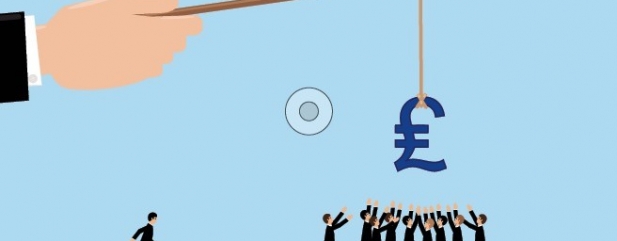Archived article
Please note that tax, investment, pension and ISA rules can change and the information and any views contained in this article may now be inaccurate.
What are dividends and when do they get paid?

Dividends are rewards paid by companies to their shareholders, typically in cash or sometimes as shares. These payments tend to be distributed twice a year for individual company shares.
Many investment funds and exchange-traded funds (ETFs) also pay dividends to their investors and distributions can be more frequent, sometimes as often as once a month.
Investors like to receive dividends as a reward for their trust in a company or fund and taking the risk of putting their money in its shares or fund units. In an ideal world, investors will receive a growing stream of dividends in excess of the rate of inflation.
It is important to note that not every stock or fund pays dividends. Even when they do, sometimes these payments are cut back or temporarily suspended, so investors should not think of them as a guaranteed source of income.
HOW IS A DIVIDEND FUNDED?
A company funds dividends out of its free cash flow. This is cash generated from operations minus any money needed to be reinvested back in its business to keep it competitive.
Sometimes a company will have to fund the dividend out of its cash savings or debt, but that isn’t sustainable in the long term.
WHAT IS THE DIFFERENCE BETWEEN AN INTERIM AND FINAL DIVIDEND?
Interim dividends are declared at the half-year stage of a company’s financial period. They can be paid when the company chooses and don’t need approval from anyone other than the management.
Final dividends are declared when a company reports its full year results. These dividends need to be approved by shareholders at the company’s annual general meeting (AGM).
WHY AREN’T DIVIDENDS PAID AS SOON AS THEY ARE DECLARED?
It can often seem like a long time between companies telling you the amount you will get paid in dividends and the money actually hitting your account.
This is because the company’s AGM can’t happen until various formalities have taken place, such as the annual report being ready and sent to shareholders, as well as shareholders being given notice of the AGM, various resolutions being put in place, and so on.
For example, FTSE 100 services group Bunzl (BNZL) declared its final dividend in February this year but shareholders didn’t get the cash until July.
If there is a delay between the results announcement and the publication of the annual report, this will delay when the AGM can take place (which will be a minimum of 21 days from posting the notice of it happening), and then delay the payment of the final dividend, which is not entirely uncommon.
WHAT IS A SPECIAL DIVIDEND?
In addition to interim and final dividends, a company can occasionally pay a special dividend, which is a one-off payment typically when a company has sold an asset and wants to share some of the proceeds with shareholders, or if it has seen cash build up on the balance sheet.
For example, Microsoft paid $3 a share to shareholders in 2004, thus paying $32bn in total, having amassed a $56bn hoard as a wave of corporations started to spend on software and technology. On 2 August 2019 Royal Bank of Scotland (RBS) declared a 12p per share special dividend.
WHEN WILL THE MONEY HIT MY ACCOUNT?
Share registrar Equiniti says the two dates to look out for when expecting a dividend are the record date and payment date.
The dividend record date is the cut-off date at which only shareholders on the company’s register on that date will receive a dividend. This usually comes a day after the ex-dividend date. Investors who buy shares on the ex-dividend date or after won’t be eligible for that year’s dividend.
Equiniti says the normal time between the record and payment dates among FTSE 350 companies is around 20 business days, but for larger companies with over 500,000 shareholders on the register, this can take up to 30 business days.
It’s also worth noting that if you own shares in overseas-registered companies, this can trigger further complications, as investors in US-registered Somero Enterprises (SOM:AIM) will know. Some shareholders have had to wait months after Somero’s payment date to actually receive their dividends.
In a statement to Shares, Somero says although it paid the dividend on time, some brokers who were responsible for distributing the dividend on its behalf had experienced payment issues.
But it reassures investors it has now found a way to pay dividends in both dollars and pounds, as well as some other denominations, going forward and that this should now fix the problem.
DO I HAVE TO RECEIVE THE DIVIDEND AS CASH?
In certain situations you can receive dividends in a different format to cash. A few FTSE 350 companies including BP (BP.) also offer scrip dividends where shareholders collect their dividend reward as new shares.
Investors can either hold the shares directly with a company offering scrip dividends or they may have the option to put the scrip dividends into an ISA or SIPP, although many investment platforms don’t accept dividends that way.
Important information:
These articles are provided by Shares magazine which is published by AJ Bell Media, a part of AJ Bell. Shares is not written by AJ Bell.
Shares is provided for your general information and use and is not a personal recommendation to invest. It is not intended to be relied upon by you in making or not making any investment decisions. The investments referred to in these articles will not be suitable for all investors. If in doubt please seek appropriate independent financial advice.
Investors acting on the information in these articles do so at their own risk and AJ Bell Media and its staff do not accept liability for losses suffered by investors as a result of their investment decisions.

 magazine
magazine









